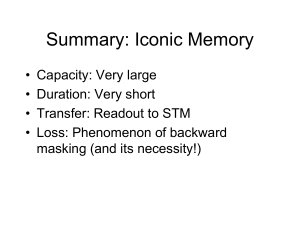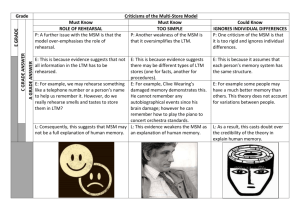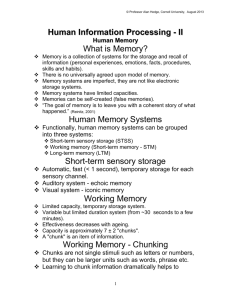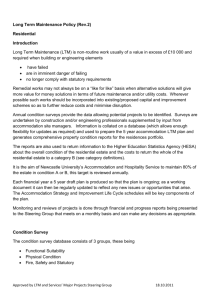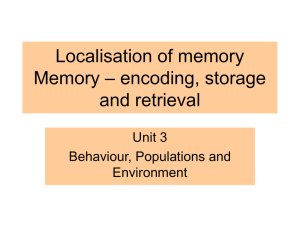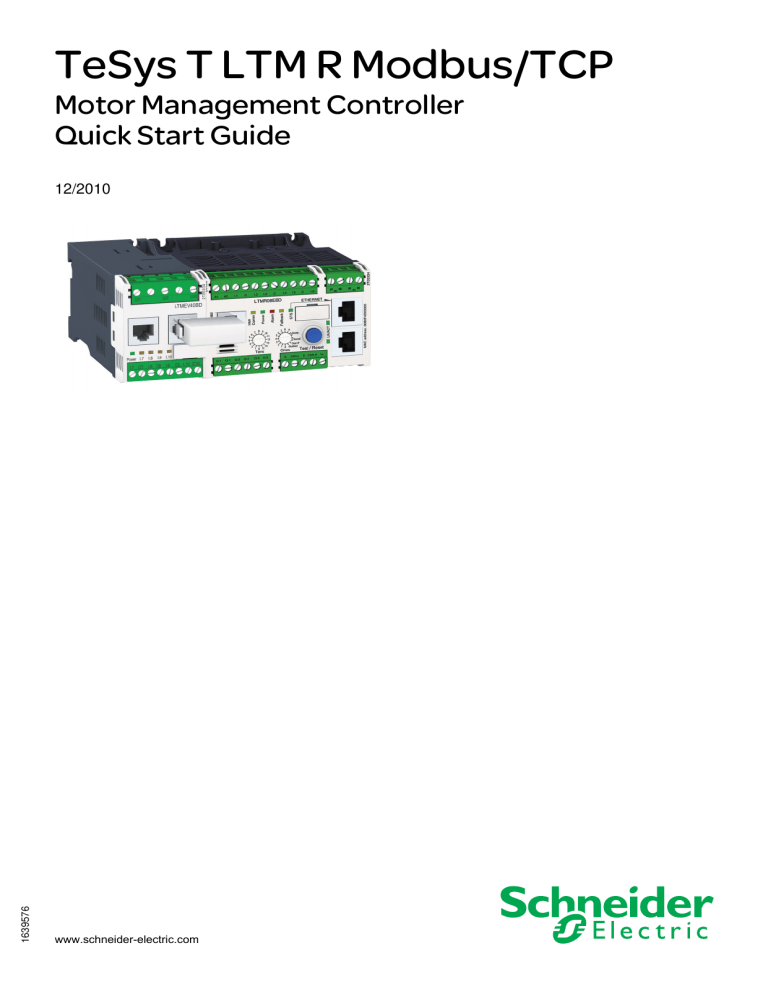
1639576 12/2010
TeSys T LTM R Modbus/TCP
Motor Management Controller
Quick Start Guide
1639576
12/2010
www.schneider-electric.com
The information provided in this documentation contains general descriptions and/or technical characteristics of the performance of the products contained herein. This documentation is not intended as a
substitute for and is not to be used for determining suitability or reliability of these products for specific
user applications. It is the duty of any such user or integrator to perform the appropriate and complete
risk analysis, evaluation and testing of the products with respect to the relevant specific application or use
thereof. Neither Schneider Electric nor any of its affiliates or subsidiaries shall be responsible or liable for
misuse of the information contained herein. If you have any suggestions for improvements or
amendments or have found errors in this publication, please notify us.
No part of this document may be reproduced in any form or by any means, electronic or mechanical,
including photocopying, without express written permission of Schneider Electric.
All pertinent state, regional, and local safety regulations must be observed when installing and using this
product. For reasons of safety and to help ensure compliance with documented system data, only the
manufacturer should perform repairs to components.
When devices are used for applications with technical safety requirements, the relevant instructions must
be followed.
Failure to use Schneider Electric software or approved software with our hardware products may result
in injury, harm, or improper operating results.
Failure to observe this information can result in injury or equipment damage.
© 2010 Schneider Electric. All rights reserved.
2
1639576 12/2010
Table of Contents
Safety Information . . . . . . . . . . . . . . . . . . . . . . . . . . . . . . . . . . . . . . . . . . . .
About the Book . . . . . . . . . . . . . . . . . . . . . . . . . . . . . . . . . . . . . . . . . . . . . . .
Chapter 1 Quick Start Guide . . . . . . . . . . . . . . . . . . . . . . . . . . . . . . . . . . . . . . . . . . . . .
5
7
9
Overview of the Application Example . . . . . . . . . . . . . . . . . . . . . . . . . . . . . . . . . . . . . . . . . . . .
Presentation of the TeSys T Motor Management System. . . . . . . . . . . . . . . . . . . . . . . . . . . . .
Installation . . . . . . . . . . . . . . . . . . . . . . . . . . . . . . . . . . . . . . . . . . . . . . . . . . . . . . . . . . . . . . . . .
Configuration . . . . . . . . . . . . . . . . . . . . . . . . . . . . . . . . . . . . . . . . . . . . . . . . . . . . . . . . . . . . . . .
FLC (Full Load Current) Settings . . . . . . . . . . . . . . . . . . . . . . . . . . . . . . . . . . . . . . . . . . . . . . .
Diagnostic . . . . . . . . . . . . . . . . . . . . . . . . . . . . . . . . . . . . . . . . . . . . . . . . . . . . . . . . . . . . . . . . .
Use with TeSys T LTM CU Control Operator Unit. . . . . . . . . . . . . . . . . . . . . . . . . . . . . . . . . . .
Network Communication on Modbus/TCP . . . . . . . . . . . . . . . . . . . . . . . . . . . . . . . . . . . . . . . .
10
11
13
17
19
20
21
24
1639576 12/2010
3
4
1639576 12/2010
Safety Information
§
Important Information
NOTICE
Read these instructions carefully, and look at the equipment to become familiar with the device before
trying to install, operate, or maintain it. The following special messages may appear throughout this
documentation or on the equipment to warn of potential hazards or to call attention to information that
clarifies or simplifies a procedure.
PLEASE NOTE
Electrical equipment should be installed, operated, serviced, and maintained only by qualified personnel.
No responsibility is assumed by Schneider Electric for any consequences arising out of the use of this
material.
A qualified person is one who has skills and knowledge related to the construction and operation of
electrical equipment and its installation, and has received safety training to recognize and avoid the
hazards involved.
1639576 12/2010
5
6
1639576 12/2010
About the Book
At a Glance
Document Scope
The Quick Start Guide uses an application example to describe the different steps to quickly install,
configure and use TeSys® T.
This document is not intended to replace the following documents:
TeSys T LTM R Modbus/TCP Motor Management Controller User Manual
TeSys T LTM R Instruction Sheet
TeSys T LTM E Instruction Sheet
Related Documents
Title of Documentation
Reference Number
TeSys T LTM R Modbus/TCP Motor Management Controller User Manual
1639505
TeSys T LTM R•• Instruction Sheet
AAV7709901
TeSys T LTM E•• Instruction Sheet
AAV7950501
TeSys T LTM CU Control Operator Unit User Manual
1639581
TeSys T LTM CU Instruction Sheet
1639582
You can download these technical publications and other technical information from our website at
www.schneider-electric.com.
User Comments
We welcome your comments about this document. You can reach us by e-mail at
techcomm@schneider-electric.com.
1639576 12/2010
7
8
1639576 12/2010
Quick Start Guide
1639576 12/2010
Quick Start Guide
1
What's in this Chapter?
This chapter contains the following topics:
Topic
1639576 12/2010
Page
Overview of the Application Example
10
Presentation of the TeSys T Motor Management System
11
Installation
13
Configuration
17
FLC (Full Load Current) Settings
19
Diagnostic
20
Use with TeSys T LTM CU Control Operator Unit
21
Network Communication on Modbus/TCP
24
9
Quick Start Guide
Overview of the Application Example
Introduction
The Quick Start Guide uses an application example to illustrate each step in the process of installing,
configuring and using TeSys T.
The application example uses the LTM R controller to protect and control a motor and its driven load, in
this case, a pump.
This application example is intended to:
show you how to configure the LTM R controller in a few steps,
provide an example you can modify to develop your own configuration,
serve as a starting point for the development of more complex configurations, incorporating such
additional features as HMI or network control.
Functions Performed
When the LTM R controller has been configured in order to protect and control the motor and pump, it
will perform the following functions:
thermal overload protection
motor temperature sensor protection
voltage protection / undervoltage
external ground fault protection
initial system configuration during commissioning using PC and PowerSuite software
Operating Conditions
The operating conditions used in the application example are:
motor power: 4 kW
line-to-line voltage: 400 Vac
current: 9 A
control circuit voltage: 230 Vac
3-wire control
motor trip class 10
start button
stop button
reset button on enclosure door
fault light
warning light
full voltage, non-reversing starter (direct over the line starter)
24 Vdc power supply in the motor control center or control station for future use with LTM E expansion
module inputs
Network Conditions
The network conditions for the example are:
protocol: Modbus/TCP
address: 1
Components Used
The application example uses the following components:
10
Item
Component Description
Reference Number
1
LTM R 100-240 Vac Modbus/TCP motor management controller
(1.35...27 A FLC)
LTMR27EFM
2
LTM E 24 Vdc expansionmodule
LTMEV40BD
3
LTM R to LTM E RJ45 connection cable
LTMCC004
4
PowerSuite cable kit
VW3A8106
5
PowerSuite software on CD-ROM, version ≥ 2.5
PowerSuite
6
External ground fault CT
TA30
7
External PTC binary motor temperature sensor
User supplied
1639576 12/2010
Quick Start Guide
Presentation of the TeSys T Motor Management System
System Overview
The TeSys T Motor Management System offers protection, control, and monitoring capabilities for singlephase and 3-phase AC induction motors.
The system offers diagnostic and statistics functions and configurable warnings and faults, allowing better
prediction of component maintenance, and provides data to continuously improve the entire system.
The 2 main hardware components of the system are:
the LTM R controller, and
the LTM E expansion module.
System Presentation
The following tables describe the main components of the TeSys® T Motor Management System.
LTM R Controller
Functional Description
Reference Number
LTMR08EBD
(24 Vdc, 0.4...8 A FLC)
LTM E
Expansion Module
current sensing 0.4...100 A
single-phase or 3-phase current inputs
6 discrete logic inputs
4 relay outputs: 3 SPST, 1 DPST
connections for a ground current sensor
connection for a motor temperature sensor
connection for network
connection for HMI device or expansion module
current protection, metering and monitoring
functions
motor control functions
power indicator
fault and warning LED indicators
network communication and alarm indicators
HMI communication LED indicator
test and reset function
LTMR27EBD
(24 Vdc, 1.35...27 A FLC)
LTMR100EBD
(24 Vdc, 5...100 A FLC)
LTMR08EFM
(100...240 Vac, 0.4...8 A FLC)
LTMR27EFM
(100...240 Vac, 1.35...27 A FLC)
LTMR100EFM
(100...240 Vac, 5...100 A FLC)
Functional Description
Reference Number
LTMEV40BD (24 Vdc logic inputs)
voltage sensing 110...690 Vac
3-phase voltage inputs
4 additional discrete logic inputs
additional voltage protection, metering and
monitoring functions
power LED indicator
logic input status LED indicators
LTMEV40FM (100...240 Vac logic
inputs)
Additional components required for an optional
expansion module:
LTM R controller to LTM E connection cable
PowerSuite Software
Functional Description
Reference Number
configure the system through menu entries
display parameters, detected warnings and faults
control the motor
PowerSuite ≥ v 2.5
VW3A8106
(PowerSuite cable kit)
Additional components required for PowerSuite
software:
a PC
separate power source
LTM R/LTM E to PC communication cable
1639576 12/2010
11
Quick Start Guide
LTM CU
Control Operator Unit
Functional Description
Reference Number
configure the system through menu entries
display parameters, detected warnings and
LTM CU
VW3A1104R.0
(HMI communication cable)
faults
control the motor
VW3A8106
Additional components required for an optional HMI
(PowerSuite cable kit)
device:
LTM9KCU
LTM R/LTM E to HMI communication cable
Kit for portable LTM CU
HMI to PC communication cable
LTM R and LTM E Description
The following diagrams show the features of the LTM R controller and LTM E expansion module:
LTM R Controller
LTM E Expansion Module
4
LV1
LV2
LV3
LTMEV40FM
1
2
Power I.7 I.8 I.9 I.10
I.7 C7 I.8 C8 I.9 C9 I.10 C10
3
5
1
1
2
Test / Reset button
LTM E / HMI port with RJ45 connector connecting the LTM R controller
to an HMI, PC, or LTM E expansion module
3 Ethernet port number 1 with RJ45 connector connecting the LTM R
controller to a Modbus/TCP network
4 Ethernet port number 2 with RJ45 connector connecting the LTM R
controller to a Modbus/TCP network
5 LTM R status-indicating LEDs
6 Plug-in terminal: control power, logic inputs and commons
7 Plug-in terminal: double pole/single throw (DPST) output relay
8 Plug-in terminal: output relay
9 Plug-in terminal: ground fault input and temperature sensor input
10 Rotary switches (Tens and Ones) for IP addressing
11 Ethernet port link and activity LEDs
12 MAC address
12
2
3
4
5
Port with RJ45 connector to HMI or
PC
Port with RJ45 connector to LTM R
controller
Status-indicating LEDs
Plug-in terminal: voltage inputs
Plug-in terminal: logic inputs and
common
1639576 12/2010
Quick Start Guide
Installation
Overview
The following procedure describes how to install and physically configure the TeSys T system, according
to the operating conditions used in the application example. The same procedure is used for other
configurations.
The full installation procedure is shown on the Instruction sheets provided with the LTM R controller and
the LTM E expansion module. It is also described in detail in the Installation chapter of the User Manual.
DANGER
HAZARD OF ELECTRIC SHOCK, EXPLOSION OR ARC FLASH
Turn off all power supplying this equipment before working on it.
Apply appropriate personal protective equipment (PPE) and follow safe electrical work practises.
Failure to follow these instructions will result in death or serious injury.
The following diagrams show the physical dimensions of the LTM R controller and the LTM E expansion
module:
LTM R
1639576 12/2010
LTM E
13
Quick Start Guide
Mount LTM R and LTM E
Mount the LTM R controller and the LTM E expansion module, respecting clearance zones and operating
position.
The diagrams below show how to mount the LTM R and LTM E on a DIN rail, solid mounting plate, or Telequick plate:
This diagram shows the operating positions possible:
90°
90°
90°
Connect LTM R to LTM E
Connect the LTM R controller and the LTM E expansion module using the RJ45 cable.
Connecting to a TeSys T LTM CU HMI Device (Optional)
The diagrams below show the TeSys T LTM CU HMI device connected to the LTM R controller, with and
without the LTM E expansion module:
1
2
3
4
14
LTM CU Control Operator Unit
RJ45 cable (VW3 A1 104R30, in this example)
LTM R controller
LTM E expansion module
1639576 12/2010
Quick Start Guide
Wire Current Transformers
Wire the current transformers according to the operating conditions:
Product range → 1.35...27 A
Nominal motor current → 9 A
1 pass through the CT windows is sufficient in this case, although 2 passes are possible:
3
L
L
3
L
1 pass
2 passes
Wire Ground CT
Wire the ground fault current transformer:
Wire LTM R
Wire the power supply and the I/O.
Wire the temperature sensors.
CAUTION
RISK OF DESTROYING THE INPUTS
Connect the LTM R controller's inputs using the 3 Common (C) terminals connected to the A1 control
voltage via an internal filter.
Failure to follow these instructions can result in equipment damage.
Wire LTM E
Wire the voltage transformers and the I/O on the LTM E expansion module.
1639576 12/2010
15
Quick Start Guide
LTM R Controller Wiring
The diagram below illustrates the main power circuit and the 3-wire (impulse) local control with network
control selectable, corresponding to the application example.
3
+/~
-/~
L ON
1
LV1
LV2
KM1
A1 A2
LV3
Reset
Stop
Start
I.1
C
I.2 I.3
C
I.4 I.5
C
I.6
97 98 95 96
O.4
LTME
I7
C7 I8
C8 I9
O.1
O.2
O.3
13 14 23 24 33 34
C9 I10 C10
KM1
LTMR
4
Z1 Z2 T1 T2
5
2
3
1
2
3
4
5
L
O
N
16
Contactor
Ground fault current transformer
PTC binary thermistor
Detected warning indication
Detected fault indication
Local control
Off
Network control
1639576 12/2010
Quick Start Guide
Configuration
Overview
After the wiring connections are made, the next step is to configure parameters using PowerSuite
software (see the PowerSuite chapter of the User Manual).
WARNING
UNINTENDED EQUIPMENT OPERATION
The application of this product requires expertise in the design and programming of control systems.
Only persons with such expertise should be allowed to program and apply this product.
Follow all local and national safety codes and standards.
Failure to follow these instructions can result in death, serious injury, or equipment damage.
Install Software
Step
Description
1
Place the installation disk into your PC’s CD/DVD drive.
2
Navigate to and click on the setup.exe file. The setup wizard begins.
3
Follow the instructions in the setup wizard.
Connect to PowerSuite™ Software
If you are not using the expansion module, the HMI
connects directly to the controller:
In the application example:
1
1
3
NO
NO
PC running PowerSuite software
PowerSuite cable kit VW3 A8 106
LTM R controller
LTM E expansion module
2
1
2
3
NO
NO
NO
13 14 23 24 33 34
NO
ETHERNET
NC
STS
Z1 Z2 T1 T2
Tens
1
2
3
4
Alarm
Power
Ones
97 98 95 96
I.4 I.5 C I.6
LTMR08EBD
Test / Reset
LK/ACT
NO
13 14 23 24 33 34
A1 A2 I.1 C I.2 I.3 C
HMI
Comm
HMI
Comm
Tens
I.9 I.10
I.7 C7 I.8 C8 I.9 C9 I.10 C10
NC
Fallback
Power I.7 I.8
NO
ETHERNET
LTMR08EBD
LTMR
HMI
4
97 98 95 96
LK/ACT
LTMEV40FM
3
I.4 I.5 C I.6
STS
A1 A2 I.1 C I.2 I.3 C
Alarm
LV3
Power
LV2
Fallback
LV1
2T05334
2
Ones
Test / Reset
Z1 Z2 T1 T2
PC running PowerSuite software
PowerSuite cable kit VW3 A8 106
LTM R controller
Set Parameters
Step
1639576 12/2010
Description
1
Start up the PowerSuite software.
2
In the Load Configuration screen, select and open a configuration file with factory default settings.
3
Open the Device Information branch of the tree control and set the Operating parameter settings.
4
Open the Settings branch of the tree control.
5
Locate and set the Operating parameter settings in the Motor and Control sub-branch.
6
Repeat step 5 for all other setting item sub-branches.
7
Save a copy of the completed configuration settings to a new configuration file.
17
Quick Start Guide
Parameter settings for the application example:
Device Information
Branch
Sub-branch
Parameter
Setting
Device information
—
Current range
1.35-27 A
Network
Modbus/TCP
Control voltage
100-240 Vac
Settings Branch
Sub-branch
Parameter
Setting
Motor and Control
Settings
Motor operating mode
Nominal voltage
400 V
Motor temperature sensor
Current Settings
Voltage Settings
4 kW
Operating mode
3 wire independent
Contactor rating
9A
Phase
3 phase
Sensor type
PTC binary
Fault enable
Enable
Fault level
According to motor
Warning level
According to motor
Load CT ratio
Internal
Load CT passes
1 (1)
Ground CT
Ground CT ratio
1000:1
Control mode
Local control
Terminal trip
Load CT
Thermal Settings
Nominal power
Thermal overload
Ground Current Mode
Undervoltage
Trip type
Inverse thermal
Trip class
10
FLC1 (1)
50 % (1) (equivalent to 9 A)
Fault enable
Enable
Warning enable
Enable
Fault enable
Enable
Fault level
1A
Fault timeout
0.5 s
Warning enable
Enable
Warning level
200 mA
Fault enable
Enable
Fault level
85 %
Fault timeout
3s
Warning enable
Enable
Warning level
90 %
(1) See FLC (Full Load Current) Settings, page 19.
Transfer the Configuration File
Step
Description
1
Open the configuration file to be transferred.
Be sure the file is in the Main window
2
Connect your PC to the LTM R controller.
Check the task bar to see whether your PC is connected to the LTM R controller.
3
Transfer the configuration file:
Select PC to Device, in either the Link → File Transfer sub-menu or the icon bar.
In the Upload Configuration dialog, click Continue. A progress bar briefly appears.
To confirm the success of the transfer, check the results in the Output window, which opens
automatically at the bottom of the Main window.
Result: The product is now ready to use.
18
1639576 12/2010
Quick Start Guide
FLC (Full Load Current) Settings
FLC Basics
NOTE: Before setting the FLC, you must first set the Contactor rating and Load CT ratio.
Load CT ratio = Load CT primary / (Load CT secondary * Passes)
Current sensor max = Current range max * Load CT ratio
Current range max is determined by the LTM R controller commercial reference. It is stored in units of
0.1 A and has one of the following values: 8.0, 27.0, or 100.0 A.
Contactor rating is stored in units of 0.1 A and is set by the user between 1.0 and 1000.0 A.
FLCmax is defined as the lower of the Current sensor max and the Contactor rating values.
FLCmin = Current sensor max / 20 (rounded to the nearest 0.01 A.). FLCmin is stored internally in units
of 0.01 A.
NOTE: Do not set the FLC below the FLCmin.
Conversion of Amperes to FLC Settings
FLC values are stored as a percentage of FLCmax
FLC (in %) = FLC (in A) / FLCmax
NOTE: FLC values must be expressed as a percentage of FLCmax (resolution of 1 %). If you enter an
unauthorized value, the LTM R will round it up to the nearest authorized value. For example, on a 0.4-8 A
unit, the step between FLCs is 0.08 A. If you try to set an FLC of 0.43 A, the LTM R will round it up to 0.4 A.
Example (No External CTs)
Data:
FLC (in A) = 9 A
Current range max = 27.0 A
Load CT primary = 1
Load CT secondary = 1
Passes = 1or 2
Contactor rating = 18.0 A
Calculated parameters with 1 pass:
Load CT ratio = Load CT primary / (Load CT secondary * passes) = 1 / (1 * 1) = 1.0
Current sensor max = Current range max * Load CT ratio = 27.0 * 1.0 = 27.0 A
FLCmax = min (Current sensor max, Contactor rating) = min (27.0, 18.0) = 18.0 A
FLCmin = Current sensor max / 20 = 27.0 / 20 = 1.35 A
FLC (in %) = FLC (in A) / FLCmax = 9.0 / 18.0 = 50 %
Calculated parameters with 2 passes:
Load CT ratio = 1 / (1 * 2) = 0.5
Current sensor max = 27.0 * 0.5 = 13.5 A
FLCmax = min (13.5, 18.0) = 13.5 A
FLCmin = Current sensor max / 20 = 13.5 / 20 = 0.67 A
FLC (in %) = FLC (in A) / FLCmax = 9.0 / 13.5 = 66 %
1639576 12/2010
19
Quick Start Guide
Diagnostic
LTM R and LTM E LEDs
A1 A2 I.1 C
I.2 I.3
9
10
11
12
2
I.9 I.10
1
0 15
13
14
Tens
I.7 C7 I.8 C8 I.9 C9 I.10 C10
97 98 95 96
NC
NO
I.6
ETHERNET
NO
NO
NO
13 14 23 24 33 34
7
8
STS
Alarm
6
9
LK/ACT
8
Fallback
HMI
Comm
7
3
I.8
I.5 C
I.4
/
6
5
4
Power I.7
C
LTMR08EBD
LTME
HMI
LTMR
LTMEV40FM
Power
LV3
LV2
24VDC
LV1
2T05334
As the application example uses the LTM R and LTM E, you must check the LEDs on both components:
BootP
5
4
Stored
3
2
1
Clear IP
0 Disabled
Ones
Test / Reset
Z1 Z2 T1 T2
LEDs
Use the 7 LEDs on the face of the LTM R controller to monitor its state, as follows:
LTM R LED
Color
Describes
Indicates
HMI Comm
Yellow
Communication activity between LTM R
controller and LTM E expansion module
On = communication
Off = no communication
Power
Green
LTM R controller power or internal fault
condition
Solid green = power on, no internal
faults, and motor off
Flashing green = power on, no internal
faults, and motor on
Off = power off, or internal faults exist
Alarm
Red
Protection fault or warning, or internal fault Solid red = internal or protection fault
condition
Flashing red (2 x per second) = warning
Flashing red (5 x per second) = load
shed or rapid cycle condition
Off = no faults, warnings, load shed or
rapid cycle (when power is On)
Fallback
Red
Communication connection between
LTM R controller and network module
Solid red = in fallback
Off = not in fallback (no power)
STS
Green
LK/ACT
Green
These LEDs together indicate network
communication: connection, speed and
activity
If the green STS LED and the green LK/ACT
LED are solid ON:
Connection is established
Speed = 100 Mbits/s
If the green STS LED is solid ON and the
green LK/ACT LED is solid OFF:
Connection is established
Speed = 10 Mbits/s
If the green STS LED is solid ON and the
green LK/ACT LED is blinking: there is an
activity
Use the 5 LEDs on the face of the LTM E expansion module to monitor its state:
20
LTM E LED
Color
Power
Green or Module power or internal fault
red
condition
Describes
Solid green = power on with no internal faults
Solid red = power on with internal faults
Off = power off
Digital Inputs I.7,
I.8, I.9 and I.10
Yellow
On = input activated
Off = input not activated
State of input
Indicates
1639576 12/2010
Quick Start Guide
Use with TeSys T LTM CU Control Operator Unit
Available Functions
Once connected to the LTM R, the LTM CU can be used to:
configure parameters for the LTM R controller,
display information about the LTM R controller configuration and operation,
monitor faults and alarms generated by the controller,
control the motor locally using the local control interface.
LTM CU Front Face
The LTM CU front face is shown below:
1
2
3
4
LCD display
Contextual navigation keys
Front face RJ45 port for PC connection (covered)
Local control interface, including 5 control keys and 4 LEDs
Navigation Keys
The LTM CU navigation keys are contextual, that is, their function depends on the associated icons
shown on the LCD display. These icons change for different displays, so the navigation key functions also
change.
The navigation keys can be used to:
1639576 12/2010
navigate menus and sub-menus,
scroll within a value list,
select a setting in a value list,
exit a value list without making a selection,
return to the main (first-level) menu,
switch between manual and automatic presentation mode in Quick View display.
21
Quick Start Guide
The diagram below shows an example of the different functions of each of the navigation keys associated
with an icon on the LCD display:
1
2
3
4
5
6
7
Information area of the LCD display
Contextual navigation icons area of the LCD display
Move up to the next higher-level menu
Move down to the next item in the menu
Select an item
Move up to the previous item in the menu
Return to the main menu
LCD Displays
The LTM CU presents 3 different LCD displays:
LCD display
Functionality
Menu
Displaying and editing the configuration settings required for configuring the
LTM R (metering, protection, control and services settings)
Displaying diagnostic and history data
Quick View
Displaying real-time metering of pre-selected parameters by automatic or manual scrolling
Detected Faults and Warnings Displaying the most recent detected fault or warning
Contextual Navigation Icons
The following table describes the icons used with the contextual navigation buttons on the LTM CU:
Icon
Description
Icon
Description
Enables access to the main menu from a submenu or from Quick View
Enables access to Quick View from the main
menu or a sub-menu
Scroll down
Enables access to manual scroll mode (when
Quick View is in automatic scroll mode)
Scroll up
Enables access to automatic scroll mode
(when Quick View is in manual scroll mode)
Validates a setting or value and enables
access to a sub-menu when a menu is selected
Used to increment a setting in menu mode
Move up to the next higher-level menu
Used to decrement a setting in menu mode
When a menu item is password-protected, this
icon enables access to the Enter Password
screen
22
1639576 12/2010
Quick Start Guide
Information Icons
The following table describes the icons provided as information in the information area of the LCD display.
They indicate, among others, the selected menu or parameter:
Icon
Description
Icon
Description
Main menu
Indicates that the present display is Quick View
Metering setting menu
Indicates that a detected warning has occurred
Protection setting menu
Indicates that an error has been detected
Control setting menu
Information
Services menu
Check box selected
Language selection menu
Check box unselected
Radio button selected
Item has been selected (for inclusion in Quick
View display)
Radio button unselected
LTM R in Configuration mode
Example of an HMI Display
Here is an example of HMI LCD displaying an average current of 0.39 A in local control, run mode:
1
2
3
4
5
6
1639576 12/2010
Quick View display icon
Name of the setting currently displayed
Motor state
Short key to main menu
Manual scroll mode icon; pressing the associated contextual navigation key switches to manual scroll mode
Value of the setting currently displayed
23
Quick Start Guide
Network Communication on Modbus/TCP
Wire the Communication Port
This procedure is shown on the Instruction sheets provided with the LTM R and the LTM E, and described
in Installation chapter of the User Manual:
0
1
PSY
P57
ETY
2600M 3634M PORT
2
3
M
R
P
C
0 Loo
1
C
P
P
1
1
2
2
I.2 I.3
I.4
I.5 C
8 9
7
10
6
BootP
11 5
12 4
Stored
13 3
Clear IP
2
14
1 0 Disabled
1 0 15
Test
Tens
NO
NO
NO
13 14 23 24 33 34
I.6
97 98 95 96
NC
NO
ETHERNET
STS
Alarm
Power
7 8 9
Fallback
HMI
Comm
6
5
4
3
2
1
2
3
4
C
LTMR08EBD
Ones
LK/ACT
A1 A2 I.1 C
3
4
/ Reset
Z1 Z2 T1 T2
Premium PLC with an Ethernet coupler
Straight or crossed shielded twisted pair connection cable (490NT•000•••)
ConneXium switch
TeSys T LTM R Modbus/TCP controller
Parameters Used in the Application Example
For the application example, the following parameters are used:
LTM R Modbus/TCP Controller
IP address
Served through DHCP
Device name
TeSysT001
Behavior on communication loss
Fault and motor stop after 5 seconds
Configuration mode
Via network
Faulty device replacement
Enabled
With auto backup enabled every 2 minutes
PLC Ethernet Coupler
Master IP address
192.168.2.3
Sub-network mask
255.255.255.0
Gateway address
192.168.2.200
Address server
Use of DHCP to associate:
Device name TeSysT001
IP address 192.168.2.100
I/O scanning
24
Inputs: Registers 2502 to 2505 (= 455 to 458)
Outputs: Register 2507 (= 704)
1639576 12/2010
Quick Start Guide
Set Up the LTM R Communication
Set up the LTM R communication with rotary switches and PowerSuite step by step:
Step
Description
Tool
1
Configure Device Name
With rotary switches
2
Configure communication loss parameters
With PowerSuite
3
Select configuration mode and configure FDR function
4
Download configuration from PC to LTM R controller
5
Power cycle the LTM R controller to take into account the new
communication parameters
Device Name Configuration
To configure TeSysT001 device name, set the rotary switches on the LTM R front face as follows:
Communication Loss Configuration
In PowerSuite, configure the communication loss as follows:
Select Configuration Mode and Configure FDR Function
Using PowerSuite, select the configuration mode and Faulty Device Replacement (FDR) functions as
follows:
1639576 12/2010
25
Quick Start Guide
Download Configuration from PC to LTM R
Transfer the configuration file from PC to LTM R controller as follows:
Power cycle the LTM R controller to take into account the new parameters.
Set up the PLC Communication
Set up the communication between a PLC and the LTM R controller:
Step
Description
1
Declare the Ethernet network in the PLC.
2
Configure the IP address of the Ethernet coupler.
3
Configure the address server function of the Ethernet coupler.
4
Configure the I/O scanning function.
5
Validate the overall configuration.
6
Associate the Ethernet configuration with the Ethernet module.
7
Compile, save and transfer the project to the PLC.
8
Test the communication via the debug screen.
9
Via an animation table, check that the motor management controller is properly working.
10
Using PowerSuite, transfer the parameter file from LTM R controller to PLC parameter file server.
The example below describes how to configure the communication between a Premium PLC running
Unity software and an LTM R controller.
Step 1
Declare the Ethernet network in the PLC.
26
In the Project Browser window, right-click Communication → Network sub-menu and select New
Network. The following window appears:
Select Ethernet among the list of available networks.
1639576 12/2010
Quick Start Guide
Ethernet_1 is the default network name:
Click OK to validate your choice.
Ethernet_1 network appears in Communication → Network sub-menu.
Step 2
Configure the Ethernet_1 coupler IP address.
In the Project Browser window, double-click Ethernet_1 network.
The coupler configuration window appears.
Select IP Configuration tab and enter the coupler IP address as shown below:
1639576 12/2010
27
Quick Start Guide
Step 3
Configure the address server function of the Ethernet coupler.
Validate the address server function in the Module Utilities area on top of the configuration window:
Select Address Server tab and configure the address server table as shown below:
Step 4
Configure the IO Scanning function.
Validate the IO Scanning function in the Module Utilities area on top of the configuration window:
Select IO Scanning tab and configure the IO Scanning function as shown below:
Validate the global Ethernet configuration through the Edit menu.
When the Modification Authorization box pops up, click Yes to confirm the edit.
Step 5
28
1639576 12/2010
Quick Start Guide
Step 6
Associate the Ethernet configuration with the Ethernet module.
In the Project Browser window, Configuration menu, double-click the reference corresponding to the
Ethernet port. The Configuration window appears:
Associate Ethernet_1 configuration to the coupler via the Net Link scrolling list:
Compile, save and transfer the project to the PLC.
Connect the PC to the PLC.
Step 7
Step 8
Check that the communication is working via the setting screen:
In the Project Browser window, Configuration menu, double-click the reference corresponding to the
Ethernet port.
Select the Debug tab. The Debug window opens, including the following areas:
Check that a green square appears in the IO Scanning area and that it corresponds to equipment
number 1.
1639576 12/2010
29
Quick Start Guide
Step 9
Via an animation table, check that the motor management controller is properly working.
In the Project Browser window, right-click Animation Tables sub-menu and select New Animation
Table item.
In the Properties window which opens, select a name and click OK.
Select one by one the words corresponding to the IO Scanning table:
%MW0 to %MW3 for the input variables (LTM R status),
%MW10 for the output variable (LTM R control).
The animation table enables you to check LTM R global status and to control the motor:
Step 10
Using PowerSuite transfer configuration from LTM R controller to PLC parameter file server:
Connect the PC to the LTM R controller.
In the Link → File Transfer menu, select LTMR to parameter server to transfer the configuration file
from LTM R controller to PLC parameter file server, as shown below:
In case of a Faulty Device Replacement, the file will automatically be downloaded from PLC parameter
file server to the new LTM R controller.
See the User Manual for more details.
30
1639576 12/2010
Quick Start Guide
Registers for Simplified Operation
Basic setup information using configuration, control and monitoring registers applies to all applications:
1639576 12/2010
31
Quick Start Guide
32
1639576 12/2010

